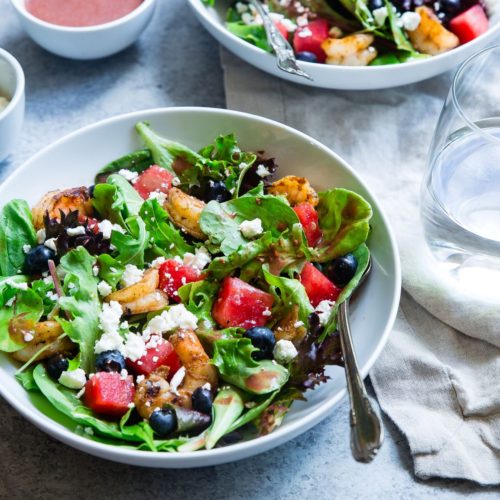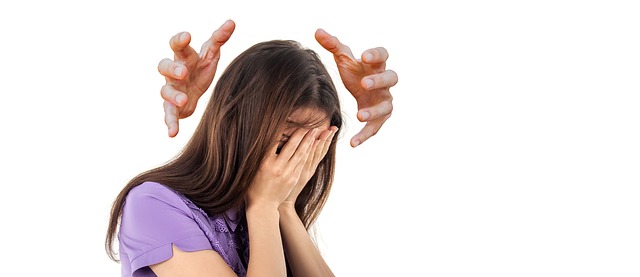Triggers can be some of the hardest things for us to figure out, right? The trouble is that there isn’t a one-size-fits-all when it comes to migraine triggers. Maybe you know your food triggers, but you are not so sure what the environmental triggers are for you. Or maybe you wonder why sometimes you can eat those foods with no migraine but other times it may not affect you.
As a migraine sufferer, your triggers are probably different from mine, but there are a few common triggers that affect a large number of people. When you can identify your triggers, you are one step closer to effectively managing your migraines and avoiding future attacks.
So let’s look at ways you can manage the ten most common migraine triggers:
1. Stress
Stress is one of the most widely recognized triggers and affects almost 70% of people with migraine. In fact, one study revealed that 50-70% of people had a significant association between their daily stress level and their daily migraine activity.
How to manage it: Make a list of things you know cause you undue stress, and then work towards reducing these triggers in your life. Here are some techniques that might help:
- Biofeedback
- Relaxation therapy
- Meditation
- Exercise
- Having a consistent sleep schedule
These can be extremely helpful in managing stress; although these ideas will not necessarily eliminate all stress from your life. However, these methods can change your body’s physiological response to stress which, in turn, may reduce the likelihood for stress to trigger a migraine attack.
2. Caffeine and Alcohol
This is another one that is not set in stone. For some, consuming alcohol and caffeine heightens migraine symptoms, while other people say that a cup of coffee can stop their migraine symptoms. Although some migraine sufferers consider red wine to be a big alcoholic trigger, studies have shown that other types of alcohol can just as likely—and sometimes even more frequently—be the culprit.
How to manage it: Try limiting your alcohol consumption, especially if you do have a tendency to have a migraine after drinking alcohol. One thing I have found in my own life is that some wines/alcohol contain more sulfites/tyramine than others, so check to see which one has only naturally occurring sulfites and/or tyramine.
3. Sleep
The connection between migraines and sleep is undeniable. Sleep renews and repairs all parts of the body—including the brain—so it makes sense that when your sleep schedule changes, you are more prone to migraine attacks. Something interesting to be aware of is that almost half of all migraine attacks occur between 4:00 am and 9:00 am, which can put you at greater risk for developing a sleep disorder.
How to manage it: Try to go to bed at the same time every night. Aim to get at least 7-8 hours of sleep. Eliminate TV, texting, reading, and listening to music while in bed, and put away all electronic devices at least one hour before bedtime. Also, try not to nap during the day.
4. Hormones
Women are three times more likely to have migraines than men, and up to 75% of women find that they experience migraines around the time of their menstrual period or when other hormonal changes occur. This is often due to the change in estrogen and progesterone levels.
How to manage it: Changes in lifestyle and diet can be really helpful (this is one of the biggest things that turned my life around. Also, here are some natural remedies to help
- Ice. Hold a cold cloth or an ice pack to the painful area on your head or neck.
- Relaxation exercises. Try relaxation exercises to lower stress.
- Biofeedback.
- Acupuncture.
- Chiropractic treatment.
5. Weather changes
This is a huge one for many of us. Storms, excessive heat, humidity and changes in barometric pressure are common weather-related triggers that can lead to a migraine attack. High humidity and heat can easily lead to dehydration, another common trigger.
How to manage it: Obviously, we have no control over the weather, so preventative measures are helpful. For example, here in Florida, June, July, and August are extremely hot and humid. As much as possible, I stay inside. There is also an app called Migraine Buddy that alerts you to barometric/weather changes so you can prepare ahead. You should make sure you are well hydrated, getting enough rest, eating healthily when you have advanced warning. Also, if I know a barometric change in pressure is imminent, I take an extra magnesium capsule the night before. It’s all about being proactive in this circumstance.
6. Diet
There is such a huge list of foods that are known to trigger a migraine attack. The most common ones include foods that contain histamine and MSG, chocolate, cheese, and other dairy products, artificial sweeteners (e.g. aspartame), caffeine, and cured meats.
How to manage it: If you know your specific food triggers, obviously avoid those foods. Some of my clients have gone on a “migraine diet” that eliminates foods and ingredients known to trigger a migraine. (You can email me for more information on how I can help at lwadsworth@verizon.net.)
7. Dehydration
I know I have told you this over and over again, but approximately 1/3 of people who suffer from migraines are dehydrated. Dehydration affects the body on all levels and can cause dizziness, confusion, and can even become a medical emergency.
How to manage it: Always carry a water bottle and keep track of your fluid intake. The latest recommendation is to drink half your body weight in ounces every day. Also, limit your intake of diuretics (for example, a cup of coffee is a diuretic). Sometimes you can stop a migraine in its tracks by simply drinking a glass of water.
There are so many more migraine triggers we could talk about but these are some of the most common ones. Of course, your experience with migraine and migraine triggers will be different from mine or even your family member. The more you can get to know about what triggers your migraines, the better off you will be.
I would love to know if you have yours figured out. Comment below and let me know.
Don’t forget to check out my private Facebook community to support you in your migraine journey. Click >>HERE<< to join.

Strawberry Kiwi Spinach Salad
Ingredients
Dressing
- 1 tbps real maple syrup
- 1/4 cup olive oil extra virgin
- 2 tbps balsamic vinegar
- 1/2 tsp paprika smokes if desired
- 1/2 tsp Worcestershire sauce
- Sea salt and black peper to taste
Salad Ingredients
- 2 cups baby spinach cleaned & chopped
- 1 cup fresh strawberries halved
- 2 kiwis peeled and cut into 1/4" slices
- 1 green onion chopped
- 1 tbsp white sesame seeds toasted
- 1/4 cup pecans chopped
Omnivore Option
- 1/4 lb turkey slices nitrate-free
Instructions
- To make the dressing, combine ingredients in a small glass or other non-reactive bowls. Season with salt and black pepper, to taste, and whisk to combine. Taste and adjust seasonings, as desired. Set aside. Add the spinach, strawberries, kiwi, and green onions to a large salad bowl and toss to combine. Top with toasted sesame seeds and chopped pecans. Pour ⅓ of the dressing over the salad and gently toss to combine. Serve immediately on chilled salad plates with the rest of the dressing on the side. Enjoy!

